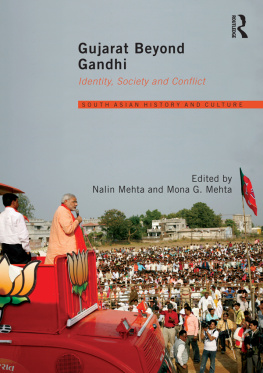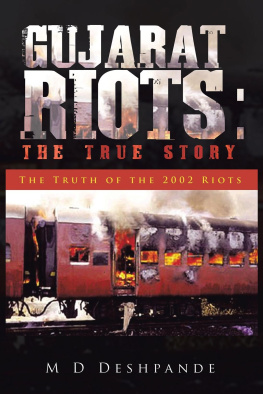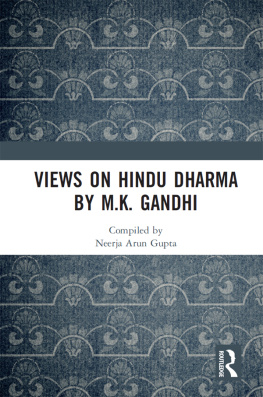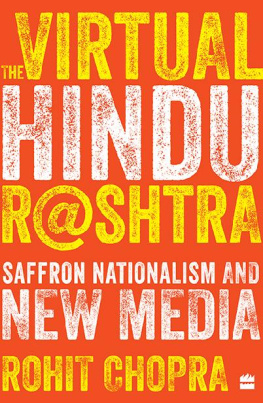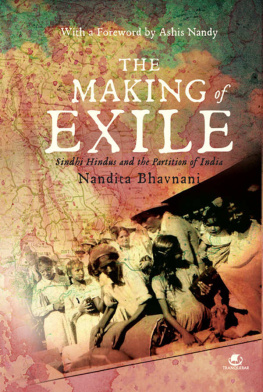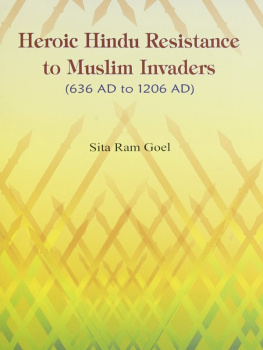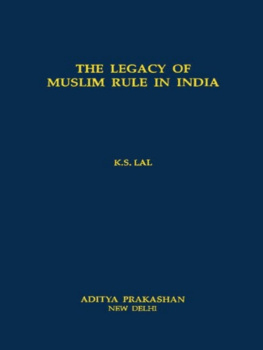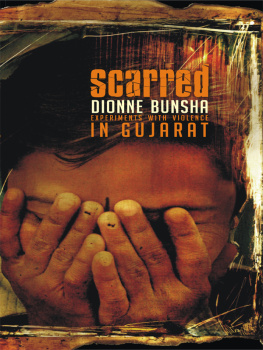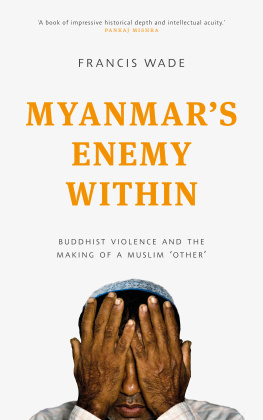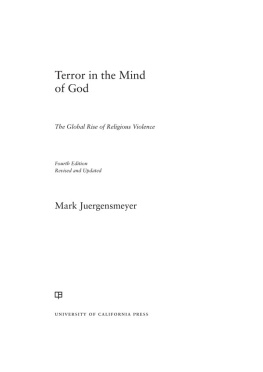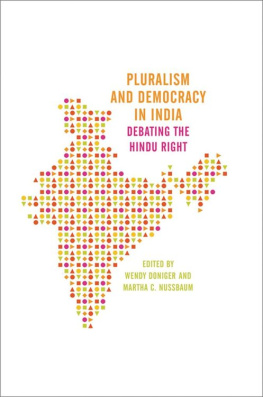Pogrom in Gujarat

FIGURE 1: Frontispiece. Indistinction
Pogrom in Gujarat
HINDU NATIONALISM AND ANTI-MUSLIM
VIOLENCE IN INDIA
Parvis Ghassem-Fachandi

Copyright 2012 by Princeton University Press
Published by Princeton University Press,
41 William Street, Princeton, New Jersey 08540
In the United Kingdom: Princeton University Press,
6 Oxford Street, Woodstock, Oxfordshire OX20 1TW
PRESS.PRINCETON.EDU
All Rights Reserved
Library of Congress Cataloging-in-Publication Data
Ghassem-Fachandi, Parvis.
Pogrom in Gujarat : Hindu nationalism and anti-Muslim violence in India / Parvis Ghassem-Fachandi.
p. cm.
Includes bibliographical references and index. ISBN 978-0-691-15176-2 (hardcover : alk. paper)ISBN 978-0-691-15177-9 (pbk. : alk. paper)
1. Gujarat Riots, India, 2002. 2. PogromsIndiaGujarat. 3. Ethnic conflictIndiaGujarat. 4. MuslimsViolence againstIndiaGujarat. I. Title.
DS485.G88G48 2012
954.750531dc23 2011026167
British Library Cataloging-in-Publication Data is available
This book has been composed in Minion
Printed on acid-free paper.
Printed in the United States of America
10 9 8 7 6 5 4 3 2 1
Contents
Figures
Pogrom in Gujarat
Introduction
POGROM IN GUJARAT IS A STUDY of an anti-Muslim pogrom in Gujarat, India, that began on February 28, 2002, and lasted for three daysapproximately seventy-two hours. Officials rationalized the violence as a reactionpratikriyato the aggression of its victims. In the city of Ahmedabad and in Gujarats central provinces, a state of exception ruled for approximately three weeks. Several mass killings were followed over a few months by many instances of violence on a lesser scale. Muslim homes and religious structures were desecrated and destroyed; Muslim commercial establishments were boycotted. Countless flyers circulated, appealing to Hindus to awake to the essence of who they wereand many did. For weeks on end, a curfew was put into effect in select areas of Ahmedabad and other cities. When it was over, 150,000 individuals had been driven from their homes and more than 1,000 people lay dead, the majority of whom were Muslims. Many Muslims understand the pogrom to have lasted much longer than three days and, instead, still today insist it lasted anywhere from six weeks to three months. Central Gujarat did not return to normalcy until spring 2003, which coincided with my departure from the scene after eighteen months of ethnographic fieldwork. Despite its severity and some singular aspects of its organization, the pogrom resembled similar events experienced by previous generations in Ahmedabad and elsewhere at the end of the 1960s, 1980s, and the 1990s (RCR; Sheth and Menon 1986; Spodek 1989; Nandy et al. 1995: 104107, 110123; Breman 2003: 253262; 2004: 221231; Shani 2007: 77132, 156188; Kumar 2009: 80215).
A pogrom is an event driven by words and images, as much by the associations and invocations that precede it as by those that accompany it. The enactment of the Gujarat pogrom followed a script collectively shared on the streets and in media representations. In the chapters that follow, I examine the forms of complicity that the pogrom demanded and the quotidian understandings it engendered. While many of these understandings seem to be recurrent instances of collective violence, I focus only on events of 2002 and seek to unravel the specific cultural and psychological processes of individual and collective identification that were then prevalent in central Gujarat. The extant literature about the pogrom, I will argue, insufficiently understands and inadequately takes into account these processes.
While I had completed an ethnographic study in a Gujarati village by the mid-1990s, I began field research in urban Ahmedabad in 1999. At that time, most residents of the city I spoke to insisted that this thing called politics was ultimately responsible for past outbreaks of violence in the city. By politics (rajkaran), reckoning with the causes and purposes of power, they meant the inherently corrupt and profoundly immoral political theater of all violent altercations. By contrast, following the pogrom in 2002, many non-Muslim residents explained the violence as an extralegal collective punishment of a recalcitrant Muslim minority by the Hindu majority, conceived of as the people. By 2009, while some Hindu-identified residents continued to hold this view, others had softened their stand. Many acknowledged Muslim victimization but nonetheless insisted that events in 2002 had been overblown in the national and international media, giving the state a bad name.
By 2009, many Muslim residents I knew, though still holding to an understanding of themselves as the primary victims of the pogrom, were no longer eager to hold any political party, civic institution, or individual accountable for the violence. Some even preferred the Bharatiya Janata Party (BJP)which has been in rule this entire timeoutright above the Congress Party because, in the words of one interlocutor, They will stab you from the front not from the back. Such a cynical apprehension of the mechanics of political representation is nothing new in the state and, some argue, had already obtained in the 1990s (G. Shah 2003b: 231).
Many Muslims also acknowledged the state governments successes for bringing economic development in the intervening years to Gujarat, which it has subsequently made central to its legitimation. Many still agreed that the events in 2002 had been politics, which means to say that the ruling political party had instigated the pogrom in order to counter a downward trend in support, as it had lost the states gram panchayat elections in 2001 and then the assembly by-elections in early 2002. But by 2009, the rule of the BJP in the state had stabilized, and Muslims were securefor a while. Accordingly, although the pogrom had been part of a timely political calculation, many people claimed that because it was ultimately predictable, they could at least reckon with it.
In these understandings, a cyclical pattern of violence with a recurrent rationalization is apparent. The way of least resistance is the relegation of all violence to an amorphous politics, the common denominator with which allHindu or Muslim, Dalit or Vaniyawill agree. Speaking transparently about past experiences with violence risks summoning a past that still vividly lurks in the present. Such interpretations elide the more disturbing realization that not only do political parties manipulate constituencies for electoral gain, but people themselves become complicit in this by inhabiting representations, participating in acts and thoughts that have effects beyond the mere political calculations of those who organize for violence. The political machinations of the pogrom reveal only half of the story.
The other half is the focus of this study. How was the chief minister of Gujarat able to mobilize city residents psychologically for violent action while, at the same time, extricating the political from the event? How were vernacular print media successful in deploying phantasmal material despite city residents profound experiences with earlier rounds of violence? How did specific members of lower and middle classes inhabit these representations, and how did their identifications relate to local practices of nonviolence, sacrifice, and disgust? How do contemporary forms of identification relate to the states most famous figure, Mahatma Gandhi? How is violence anchored in the urban hardware of a city whose spatial configuration is profoundly scarred by violent experiences? And, last, what is the peculiar logic of inclusive exclusion as it revolves around the inherent instability of the categories Hindu and Muslim evoked in the pogrom?
Next page

